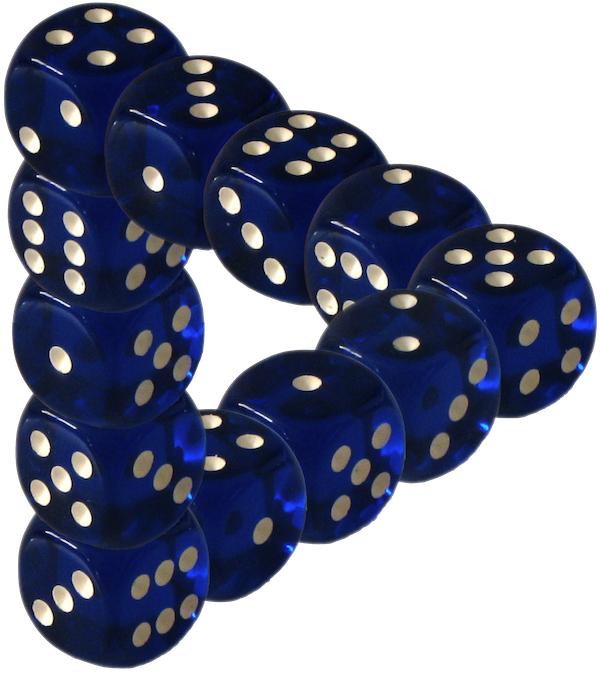EvoLudoLab: Spatial Ecological PGG - Diffusion induced instability: Difference between revisions
No edit summary |
|||
| Line 1: | Line 1: | ||
{{ | {{EvoLudoLab:EcoPGG| | ||
options="--run --delay 100 --popsize 101x --popupdate D --geometry nf --intertype a --colors black:red:green --reportfreq 1 --diffusion 100:1 --inittype 2 --initfreqs 8:1:1 --basefit 1.0 --selection 1.0 --groupsize 8 --cost 1.0 --interest 2.5 --birthrate 1.0 --deathrate 1.2 --pdedt 0.05 --pdeL 256"| | options="--run --delay 100 --popsize 101x --popupdate D --geometry nf --intertype a --colors black:red:green --reportfreq 1 --diffusion 100:1 --inittype 2 --initfreqs 8:1:1 --basefit 1.0 --selection 1.0 --groupsize 8 --cost 1.0 --interest 2.5 --birthrate 1.0 --deathrate 1.2 --pdedt 0.05 --pdeL 256"| | ||
type=PDE| | type=PDE| | ||
Revision as of 02:06, 8 October 2015
| Cooperator density: | Low High
|
|---|
| Payoff code: | Low High
|
|---|
Diffusion induced instability - Turing patterns
The initial configuration is symmetric and the formation of Turing patterns through diffusion induced instability preserves this symmetry. Patterns emerge through the competing forces of cooperators (activtors) and defectors (inhibitors). In the absence of spatial extension, cooperators and defectors would co-exist in a stable equilibrium. In contrast to patterns emerging through diffusion induced co-existence, Turing patterns require a minimum difference between the diffusion rates of inhibitors (fast) and activators (slow).
The parameters are , , , , using numerical integration of the partial differential equation with the diffusion constants , . The initial configuration is a circular disk of equal densities of cooperators and defectors () in the center of a square lattice with fixed (reflecting) boundary conditions.
Data views
| Snapshot of the spatial arrangement of strategies. | |
| 3D view of snapshot of the spatial arrangement of strategies. | |
| Time evolution of the strategy frequencies. | |
| Strategy frequencies plotted in the simplex \(S_3\). If no calculation is running, mouse clicks set the initial frequencies of strategies and stops the calculations otherwise (for the ODE solver it switches to backwards integration). | |
| Frequencies plotted in the phase plane spanned by the population density (\(u + v = 1 - w\)) and the relative frequency of cooperators (\(f = u / (u + v)\)). Again, mouse clicks set the initial frequencies of strategies, stop the simulations or switch to backward integration | |
| Snapshot of the spatial distribution of payoffs. | |
| 3D view of snapshot of the spatial distribution of payoffs. | |
| Time evolution of average population payoff bounded by the minimum and maximum individual payoff. | |
| Snapshot of payoff distribution in population. | |
| Degree distribution in structured populations. |
Game parameters
The list below describes only the parameters related to the public goods game and the population dynamics. Follow the link for a complete list and descriptions of all other parameters such as spatial arrangements or update rules on the player and population level.
- --interest <r>
- multiplication factor \(r\) of public good.
- --cost <c>
- cost of cooperation \(c\) (investment into common pool).
- --lonecooperator <l>
- payoff for a cooperator if no one else joins the public goods interaction.
- --lonedefector <l>
- payoff for a defector if no one else joins the public goods interaction.
- --basefit <
b> - baseline reproductive rate of all individuals. The effective birthrate is affected by the individual's performance in the public goods game and additionally depends on the availability of empty space.
- --deathrate <d>
- constant death rate of all individuals.
- --init <d,c,e>
- initial frequencies of defectors d, cooperators c and vacant space e. Frequencies that do not add up to 100% are scaled accordingly.
- --inittype <type>
- type of initial configuration:
- frequency <f0>,<f1>...
- random distribution with given trait frequencies, f0, f1,.... Note, only available for frequency based modules and models.
- density <d0>,<d1>...
- initial trait densities <d1,...,dn>. Note, only available for density based modules and models.
- uniform
- uniform random distribution, equal frequencies of all traits.
- monomorphic <t>[,<v>]
- monomorphic initialization with trait t. Note, for modules with variable population densities, the optional parameter v indicates the initial frequency of vacant sites. If omitted the monomorphic trait is initialized at its (estimated) carrying capacity.
- mutant <m>,<r>[,<v>]
- single mutant with trait m in homogeneous resident population of type r. The mutant is placed in a location selected uniformly at random (mutants arising through cosmic rays). Note, for modules with variable population densities, the optional parameter v indicates the initial frequency of vacant sites. If omitted the resident trait is initialized at its (estimated) carrying capacity.
- temperature <m>,<r>[,<v>]
- single mutant with trait m in homogeneous resident population of type r. The mutant is placed in a location selected proportional to the in-degree of nodes (temperature initialization, mutants arising through errors in reproduction). Note, for modules with variable population densities, the optional parameter v indicates the initial frequency of vacant sites. If omitted the resident trait is initialized at its (estimated) carrying capacity.
- stripes
- stripes of traits. Note, only available for 2D lattices.
- kaleidoscopes
- configurations that produce evolutionary kaleidoscopes for deterministic updates (players and population). Note, only available for some modules.
Note, for modules that admit multiple species, the initialization types for each species can be specified as an array separated by ;. With more species than initialization types, they are assigned in a cyclical manner.








